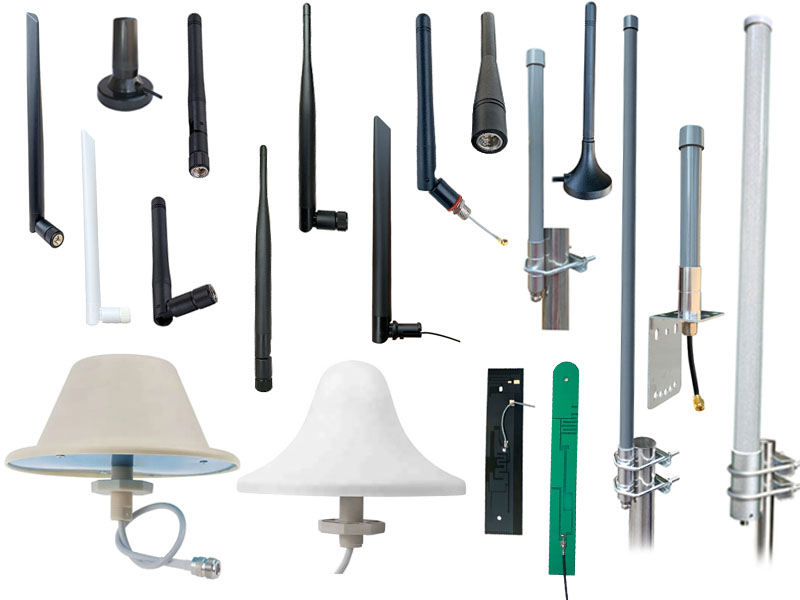-
We’re On Call 24/7 : +8613538296050
-
E-mail : anna@rohoconnector.com
We’re On Call 24/7 : +8613538296050
E-mail : anna@rohoconnector.com
Walk past any cell tower or glance at your smartphone specs, and you'll see "4G" and "LTE" plastered everywhere. It naturally leads to questions: "Do I need a special antenna for 4G vs. LTE?" "Are they fundamentally different?" The answer, much like the underlying technology, is intertwined. Let's demystify the relationship between 4G and LTE antennas.
First, Clarifying the Terms: 4G and LTE
4G (Fourth Generation): This is the generation standard set by the ITU (International Telecommunication Union). It defines the capabilities a network must achieve to be called "4G": high data speeds (think 100 Mbps moving, 1 Gbps stationary), low latency, and advanced features like VoIP and mobile TV.
LTE (Long Term Evolution): This is the primary technology path developed by the 3GPP standards body to achieve those 4G goals. It's the dominant implementation of 4G worldwide. Think of 4G as the destination (high-speed broadband mobile internet), and LTE as the main highway built to get there.
So, What About the Antennas? Similarities Rule the Day
Here's the crucial point: In the vast majority of real-world deployments, "4G antennas" and "LTE antennas" refer to the exact same physical hardware. Why?
LTE is 4G (for practical purposes): When carriers launched their initial "4G" networks, they were almost exclusively using LTE technology. True "IMT-Advanced" 4G (like early WiMAX or later LTE-Advanced) met the full ITU specs, but LTE became the universally adopted brand for 4G.
Shared Infrastructure: Carriers didn't rip out antennas when deploying LTE. They leveraged and upgraded existing sites. The antennas deployed for LTE were the antennas used for their 4G service.
Hardware Agnosticism (to a point): A well-designed modern cellular antenna is essentially a sophisticated radio frequency (RF) transducer. Its job is to transmit and receive signals efficiently within specific frequency bands. LTE operates within bands also used for other technologies (including refarmed 2G/3G bands and dedicated 4G bands). The same antenna can handle signals for LTE, and often for 3G (HSPA+) marketed as "4G" in some regions, and later for LTE-Advanced (True 4G) and even 5G in some cases (using passive elements).
Key Similarities of 4G/LTE Antennas:
Physical Form Factor: Panel antennas (RRUs - Remote Radio Units often integrated or mounted close by).
Core Function: Radiating and capturing RF signals in licensed spectrum bands.
Technology Support: Designed to support OFDMA (Orthogonal Frequency-Division Multiple Access) for downlink and SC-FDMA for uplink – the fundamental air interface technologies of LTE.
MIMO Capability: Both leverage MIMO (Multiple Input, Multiple Output) technology, using multiple antenna elements to improve data rates and signal reliability. 2x2 MIMO is common in devices and base stations.

Are There Any Differences? It's Nuanced...
While the hardware is typically identical, the context and evolution create subtle distinctions:
Marketing vs. Technical: Sometimes "4G antenna" might be used loosely to refer to antennas capable of handling faster speeds associated with the 4G generation, which could include early HSPA+ deployments (technically 3.5G). "LTE antenna" is more technically precise, specifying support for the LTE standard.
Evolution within LTE: As LTE evolved to LTE-Advanced (LTE-A) and LTE-A Pro (meeting and exceeding the original 4G specs), the capabilities demanded of the antennas increased:
Higher Order MIMO: While basic LTE uses 2x2 MIMO, LTE-A introduced 4x4 MIMO and even 8x8 MIMO, requiring antennas with more physical elements.
Carrier Aggregation (CA): LTE-A combines multiple frequency bands ("carriers") to create a wider virtual channel for higher speeds. Antennas need to support transmitting/receiving efficiently across these potentially disparate bands simultaneously.
Beamforming: Advanced LTE networks use beamforming techniques (like Massive MIMO, more common in 5G but used in late-stage LTE) to focus signals directionally. This requires antennas with many more elements and sophisticated signal processing.
Frequency Band Support: While many antennas are multi-band, a site specifically optimized for a new LTE band (e.g., Band 71 - 600MHz for better coverage) might involve deploying antennas tuned particularly well for that band, though they still serve the LTE (4G) network.
The Takeaway: Focus on Capabilities, Not Just Labels
Don't sweat the antenna label: If someone offers you a "4G antenna" or an "LTE antenna," it's overwhelmingly likely they are referring to the same piece of hardware designed for LTE networks.
Look beyond the generation name: What matters more are the antenna's specific capabilities:
Which frequency bands does it support? (Crucial for carrier compatibility)
Does it support MIMO? What level (2x2, 4x4, 8x8)?
Is it designed for techniques like Carrier Aggregation or Beamforming?
What are its gain and radiation pattern characteristics? (Affects coverage)
In essence: LTE is the workhorse technology of 4G. The antennas deployed for LTE are the antennas powering your 4G experience. The differences arise not in the fundamental hardware distinction between "4G" and "LTE" antennas, but in the evolving capabilities required by advanced versions of LTE (LTE-Advanced/Pro) to deliver true 4G speeds and beyond. When choosing equipment, focus on the technical specs that match your network's requirements, not just the generational label. The antenna on the tower likely doesn't care what you call it – it's busy handling your data!